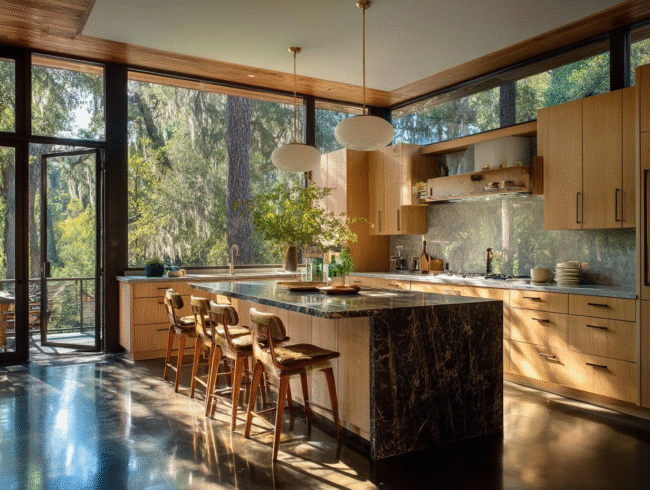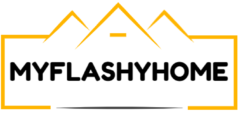
If you’re shopping for RTA kitchen cabinets (ready-to-assemble), you already know the draw: fast shipping, fair prices, and a huge selection.
But here’s the catch—two cabinets can look the same online and feel totally different in your kitchen. The difference is hidden in small quality signals most shoppers overlook.
This guide shows you what to check, why it matters, and how to tell good RTA from “good-looking” RTA—before you spend a dollar.
RTA 101: Why Quality Varies So Much
RTA cabinets ship flat and you assemble them at home. That saves freight costs and warehouse space, which can lower the price. But the materials, hardware, and joinery can range from rock-solid to flimsy.
Photos and long product lists don’t always tell the whole story. Your best move is to focus on a few key signals that predict how long your cabinets will stay strong, square, and quiet.
Signal #1: Box Materials That Don’t Sag or Swell
The cabinet “box” is the shell. It carries the weight of your countertop, dishes, and daily use.
What to look for
- Plywood sides and shelves in the 1/2″–3/4″ range. Quality lines often use 5/8″ or 3/4″. Plywood resists sagging and holds screws well.
- UV-finished interiors (often a light birch look). These are smooth, easy to clean, and don’t yellow quickly.
- Full-height back panel that’s at least 1/2″ thick or a 1/4″ back fully captured in dadoes with strong top/bottom stretchers.
- Real veneer or solid color surfaces, not paper printing. A light, even sheen is a good sign.
Red flags
- Thin 1/4″ backs stapled on like a picture frame.
- Particleboard with soft edges that crumble when you tighten screws.
- Paper-thin edge banding that peels with a fingernail.
Why it matters Strong boxes keep doors aligned, drawers smooth, and countertops level. Weak boxes twist over time and cause constant re-adjusting.
Signal #2: Joinery That Locks the Box Square
Good RTA kitchen cabinets assemble tight and stay square without a fight.
What to look for
- Dadoes, dowels, and glue where the sides meet the bottom/top.
- I-beam or solid wood top stretchers across the cabinet to keep it square.
- Screws or confirmat screws (big, coarse threads) in the right places.
- Clear pilot holes that line up—no “drill-and-hope” guesswork.
Red flags
- Only cam locks holding the cabinet together with no glue or dowels.
- Plastic corner blocks instead of wood or plywood braces.
- Mis-drilled holes that force you to bend parts into place.
Quick test at home Assemble one box loosely. Measure diagonals from corner to corner. If both numbers match, it’s square. If they’re off by more than 1/8″, quality is suspect.
Signal #3: Drawer Boxes That Don’t Quit
Drawers take daily abuse. Cheap drawers are the first to fail.
What to look for
- Solid wood sides (often maple or birch) at 5/8″ thickness.
- Dovetail joints at the corners. Tight, clean dovetails = care.
- Plywood bottoms fully captured in grooves, not stapled on.
- Undermount, full-extension, soft-close slides rated 75–100 lb or higher.
Red flags
- 1/2″ or thinner sides with butt joints and staples.
- 3/4-extension side-mount slides that stop short.
- Bottom panel that flexes when you press in the middle.
Quick test at home Load the drawer with a few heavy pots. Open and close it. Listen. A quality drawer rolls quietly, doesn’t bounce, and doesn’t scrape.
Signal #4: Hinges With Real Adjustability
Hinges decide how your doors look and sound. They also tell you a lot about overall cabinet quality.
What to look for
- 35 mm cup, concealed, soft-close hinges.
- Six-way adjustment (up/down, left/right, in/out) so you can dial in perfect reveals.
- Stout mounting plates with clean screws that bite firmly.
Red flags
- Only two-way adjustment (left/right) or no soft-close.
- Thin plates that bend when you tighten them.
- Hinges that “click” or grind when opening.
Pro tip A door should close softly without needing a slam. If you must push hard or the door rebounds, the hinge or box is off.
Signal #5: Face Frames, Doors, and Edges That Age Well
This is what you see every day. The details show whether the maker cared.
For framed cabinets
- Hardwood face frames with tight joints (pocketholes may be okay if clean).
- Mortise-and-tenon or quality pocket-screw joinery that doesn’t gap.
For frameless (European style)
- 2 mm edge banding on door edges is a strong sign. Thicker banding resists chips.
- Thick cabinet sides (5/8″ or 3/4″) since the box is the frame.
Doors
- Solid wood frames with stable center panels (MDF center under paint is fine—less cracking).
- Consistent grain and color across a pair of doors.
Red flags
- 0.3–0.5 mm edge banding that looks like tape.
- Poorly sanded edges that feel sharp or fuzzy.
- Visible filler or putty at joints on new doors.
Signal #6: Finishes That Resist Life (Not Just Look Good)
A beautiful finish should also be durable and easy to clean.
What to look for
- UV-cured clear coats inside the box.
- Factory-applied, catalyzed topcoats on painted or stained fronts.
- Even color with no drips, sags, or rough patches.
Red flags
- Strong chemical smell weeks after unboxing (cheap finishes off-gas).
- Color that rubs off on a white cloth with mild cleaner.
- “Orange peel” texture on large flat areas.
Quick test at home On a hidden spot, rub lightly with a soft cloth and a tiny bit of mild soap and water. A good finish won’t cloud, smear, or bleed color.
Signal #7: Shelves, Pins, and the Little Hardware That Matters
Small parts add up to big differences over time.
What to look for
- 3/4″ adjustable shelves with edge banding on the front.
- Metal shelf pins (5 mm) that seat flush and don’t wobble.
- Quality screws with deep heads that don’t strip.
Red flags
- Plastic pins that tilt.
- Warped thin shelves that bow under cereal boxes.
- Random screws—mismatched types and sizes in one kit.
Signal #8: Packaging, Labels, and Instructions (Yes, Really)
Quality brands care about your assembly experience.
What to look for
- Double-wall cartons with corner protection.
- Every panel labeled with a part code that matches the manual.
- Spare fasteners in the hardware pack.
- Clear, step-by-step instructions (bonus if there’s a QR code for a video).
Red flags
- Loose parts rattling in the box.
- No labels—you waste time guessing.
- Instructions that skip steps or use tiny, fuzzy drawings.
Signal #9: Compliance and Certification
A few letters can tell you the maker follows safety rules.
What to look for
- CARB Phase 2 / TSCA Title VI statements for low formaldehyde in composite wood.
- KCMA-style testing or stated weight ratings for slides and shelves.
Red flags
- No mention of emissions standards for engineered wood.
- Vague promises like “premium quality” with zero specs.
Signal #10: Fit, Alignment, and Tolerances
Even a strong cabinet can look cheap if parts don’t line up.
What to look for
- Consistent pre-drilled holes spaced evenly.
- Tight seams where the bottom meets the sides (no daylight).
- Uniform reveals around doors and drawer fronts.
Red flags
- Oversized holes that let hardware wander.
- Gaps where panels meet even after you’ve tightened everything.
- Doors that rub the face frame or each other.
Quick test at home Hang a door and try a gentle “wiggle.” If the alignment shifts easily, the hinge plate or the box isn’t holding tight.
Framed vs. Frameless: Quality Signals Change
Framed cabinets use a front frame for strength. Look for hardwood frames, tight joints, and good hinge plates. Frameless cabinets depend on thicker sides and strong edge banding. Look for 3/4″ sides, 2 mm edge banding, and sturdy dowel/glue construction.
Neither style is “better.” What matters is how well it’s built.
Price vs. Quality: How to Read the Gap
A higher price can buy better cabinet grade plywood, thicker edge banding, and premium hardware. But RTA kitchen cabinets cut costs mostly on shipping and labor, not materials—so you can get strong boxes for smart money. Spend where it lasts:
- Spend more on drawers and slides. You use them every day.
- Spend more on finish and doors. That’s what you see.
- Don’t overpay for fancy names. Pay for specs you can verify.
Simple In-Home Tests (Before You Assemble Everything)
- Square test: Build a base cabinet loosely. Measure both diagonals. Match = square.
- Shelf deflection: Place a stack of books or a few cans in the center of a shelf. Good shelves barely bow.
- Hinge check: Hang a door. Adjust left/right, up/down, in/out. It should dial in fast.
- Slide test: Load a drawer and open/close with one finger. Smooth and quiet is the goal.
- Finish wipe: On a hidden spot, wipe with a damp microfiber. No color transfer.
- Sniff test: Strong chemical odor that lingers = poor finish or resin.
Assembly Tips That Protect Quality
- Dry-fit first. Set parts together without glue to learn the sequence.
- Use wood glue where the manual allows. Wipe squeeze-out right away.
- Don’t overtighten. Stripped holes lead to loose hinges later.
- Work on a flat surface. Uneven floors cause twist during assembly.
- Check square at each step. It’s easier to fix before the back goes on.
Fast Red-Flag Checklist (When You’re Skimming a Product Page)
- Sides thinner than 1/2″?
- Back is 1/4″ stapled on?
- No mention of soft-close slides/hinges?
- Drawer sides 1/2″ or less with butt joints?
- Edge banding under 1 mm?
- No emission standard listed (CARB/TSCA)?
- Fuzzy instructions or no labeled parts?
- Reviews mention peeling finish, loose doors, or damaged packaging?
If you check three or more boxes, keep shopping.
What a Strong RTA Spec Looks Like (At a Glance)
- Box: 5/8″–3/4″ plywood sides; 1/2″ full back or fully captured 1/4″.
- Joinery: Dadoes/dowels + glue; solid top stretchers.
- Drawers: 5/8″ solid wood with dovetails; captured plywood bottom; undermount, full-extension, soft-close slides rated 75–100 lb.
- Hinges: 35 mm cup, soft-close, six-way adjust.
- Shelves: 3/4″ adjustable with metal pins.
- Finish: UV-cured interiors; catalyzed topcoat on fronts; even color and sheen.
- Edges: 2 mm banding on frameless; clean hardwood frames on framed.
- Compliance: CARB Phase 2 / TSCA Title VI noted.
- Packaging: Double-wall cartons, labeled parts, extra fasteners, clear manual.
Final Takeaway
Great RTA kitchen cabinets don’t hide behind fancy photos. They prove themselves with solid materials, smart joinery, quality hardware, clean finishes, and clear instructions.
When you know these signals, you can read past the marketing and pick cabinets that go together smoothly, carry weight without a squeak, and still look sharp years from now.
Don’t rush. Compare specs. Ask for details that aren’t listed. And when in doubt, order a single cabinet or a sample door first. Your kitchen will thank you every day you open a drawer and it just—glides.
